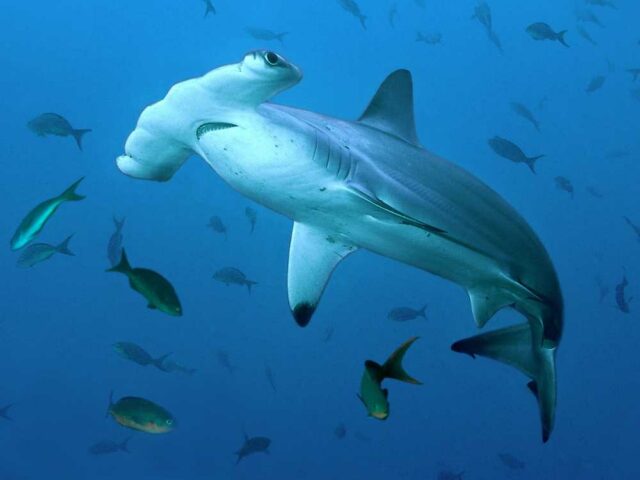Costa Rica’s thriving forests and abundant wildlife have made it a prime destination for eco-travelers, but the country’s lesser-known marine environments are teeming with life and just as much thrills. Sadly, in recent years these underwater habitats have been contaminated by overfishing, poaching, and invasive species, and newspapers have called on the country to strengthen its “blue agenda.”
The message for travelers is clear: be responsible. But with the right guidance, ocean lovers can still experience Costa Rica’s incredible marine resources and can often support conservation efforts in these waters as well.
Here’s our pick of the country’s marine hotspots and how to experience them responsibly:
Exploring Cocos Island
Cocos Island, a former pirate haven, perched 300 miles offshore, teems with wildlife and (supposedly) buried treasure. Declared a UNESCO World Heritage Site in 1997 and featured in Jurassic Park, the island offers some of the most dazzling underwater adventures in the world.
Hundreds of hammerhead sharks, as well as tiger sharks still spin in the water by the hundreds, and huge schools of catfish and yellowfin tuna abound. Beneath the waves, experienced divers will marvel at the abundance of underwater life, and visitors on the surface will encounter leaping dolphins, gigantic manta rays, and drifting sea turtles.
When? All year.
Turtle encounters at Playa Ostional
Seeing a sea turtle is exciting. Finding thousands is an experience that people never forget. At Costa Rica’s Playa Ostional, visitors watch hundreds of thousands of them row ashore and drag their bodies across the fine white sand. During these turtle gatherings – known locally as arrival – the turtles lay millions of eggs the size and color of ping-pong balls, which will eventually grow into so many little baby turtles. The luckiest of travelers can also watch as these youngsters stumble towards the sea.
While turtle watching tours are offered through hotels in the area, visitors to the beach must hire a local guide to support the Ostional community. These informative guides will tell you the stories of the turtles while they are just steps away. (Note: flash photography is not allowed as it temporarily blinds the animals).
When? Arrivals take control of the beach during the last quarter of the moon, but are particularly well catered for during the rainy months, June through December.
Sharks lurking in the islas Murcielagos

‘The Murcielagos (Bats),’ as these islands off the north Pacific coast of Costa Rica are affectionately known, are teeming with bull sharks. Taking a close look at these mighty sea monsters, growing up to 16 feet, is the best (but not the only) reason to go. Multicolored fish and giant rays also glide over impressive underwater rock formations and twisted caverns 65 feet below the surface. Strong currents mean this dive is only suitable for those with experience. Beginners will appreciate the nearby Catalina Islands or Cabeza de Mono Islet, which attracts angelfish and gliding crustaceans.
When? Shark viewing time is from May to September.
Snorkel off the Caribbean coast

For those who prefer a relaxing snorkel to deep sea diving, head to the southern Caribbean. This is the only place in the country where coral still exists, along with all the tropical creatures at the top of the reef food chain. Think of the funny nurse sharks, lobsters, and coiled octopuses. The best snorkeling can be found at Cahuita National Park, a marine reserve established in the 1970s specifically to protect the reef and surrounding wildlife. With nearly 600 acres of live coral, this area supports more than 100 species of fish. Not much away from the reef and just a few meters away, divers can also discover an 18th century slave ship that never made it to Limón.
A swim in the park requires visitors to hire a guide, primarily to make sure no further damage is done to the coral (an earthquake in 1991 shook the reef and the dreaded lionfish, an invasive predator, has also been causing trouble).
When? Conditions are most favorable between the months of February and April, when the water is at its clearest. On days where visibility is poor, guests should consider staying on land.
Osa Peninsula
Rich in nutrients, the deep waters of the Osa Peninsula tend to attract large marine mammals in droves. Spinner dolphins have been known to travel in super pods numbering in the thousands, and occasionally a lucky boat ride occurs with one. But even if you don’t see a super pod, a sea safari is usually rewarding: In certain months, 40-ton humpback whales migrate from their wells and release their huge tales into the air. They are also known to sing among themselves and suckle their calves right next to tour boats.

